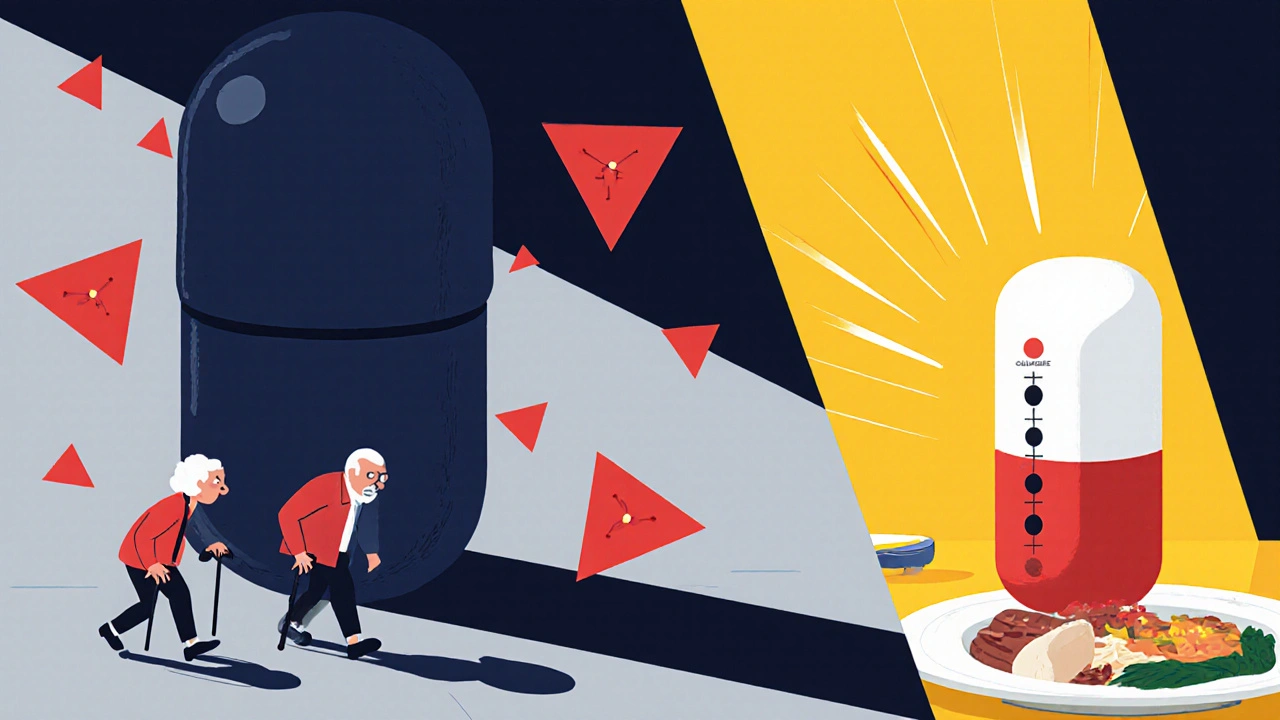
Sulfonylurea Safety Assessment
Your Risk Profile
Recommended Sulfonylurea
Based on your profile, we recommend:
Glyburide
Glipizide
Glimepiride
When you're managing type 2 diabetes and your doctor suggests a sulfonylurea, it’s easy to assume they’re all the same. But they’re not. The difference between one pill and another could mean the difference between safely controlling your blood sugar - and ending up in the emergency room with dangerously low glucose.
Why Sulfonylureas Still Matter
Sulfonylureas have been around since the 1950s, but they haven’t disappeared. In fact, in 2022, about 15% of U.S. adults with type 2 diabetes were still taking them. Why? Because they work - and they’re cheap. Generic versions cost as little as $4 a month. Compare that to newer drugs like Ozempic, which can run over $500 a month. For people on Medicare, Medicaid, or living in countries without universal healthcare, sulfonylureas are often the only realistic option.They work by telling your pancreas to pump out more insulin. That lowers blood sugar fast. But here’s the catch: insulin doesn’t know when you’ve skipped a meal or gone for a long walk. It just keeps working. And that’s where the danger starts.
The Hypoglycemia Problem
Low blood sugar - hypoglycemia - is the biggest risk with sulfonylureas. It’s not just feeling shaky or hungry. Severe hypoglycemia can cause seizures, loss of consciousness, falls, heart problems, and even death. And not all sulfonylureas are created equal when it comes to this risk.Long-acting sulfonylureas like glyburide (also called glibenclamide) are the worst offenders. A 2017 study in Diabetes Care found people on glyburide had nearly three times the risk of severe hypoglycemia compared to those on shorter-acting versions. Why? Because glyburide sticks around in your body for up to 24 hours, with active metabolites still working even after the initial dose wears off. If you eat late, skip a meal, or your kidneys slow down with age, that lingering insulin can crash your blood sugar.
Real-world data backs this up. From 2018 to 2022, the FDA’s adverse event database showed glyburide accounted for 68% of all sulfonylurea-related hypoglycemia reports - even though it was only prescribed about 36% of the time. That’s not a coincidence. It’s a pattern.
Glipizide: The Safer Choice
If you need a sulfonylurea, glipizide is the one most experts now recommend. It’s short-acting. It clears your system in 4 to 6 hours. That means it only pushes insulin when you’re eating. If you miss a meal, the drug is mostly gone by the time your blood sugar starts to drop.Studies show glipizide causes only about 4.2 episodes of severe hypoglycemia per 1,000 patient-years. Glyburide? Around 12.1. That’s almost three times higher. A 2023 survey of 1,245 glipizide users found 78% reported good blood sugar control without severe lows. Only 42% of glyburide users said the same.
And it’s not just numbers. On diabetes forums, people who switched from glyburide to glipizide report dramatic improvements. One user wrote: “I was having 2-3 severe lows a month on glyburide. Since switching to glipizide, I’ve had zero.” Another shared: “I spent three days in the hospital because my kidney function dropped and my glyburide dose wasn’t adjusted. My doctor admitted he shouldn’t have prescribed it.”
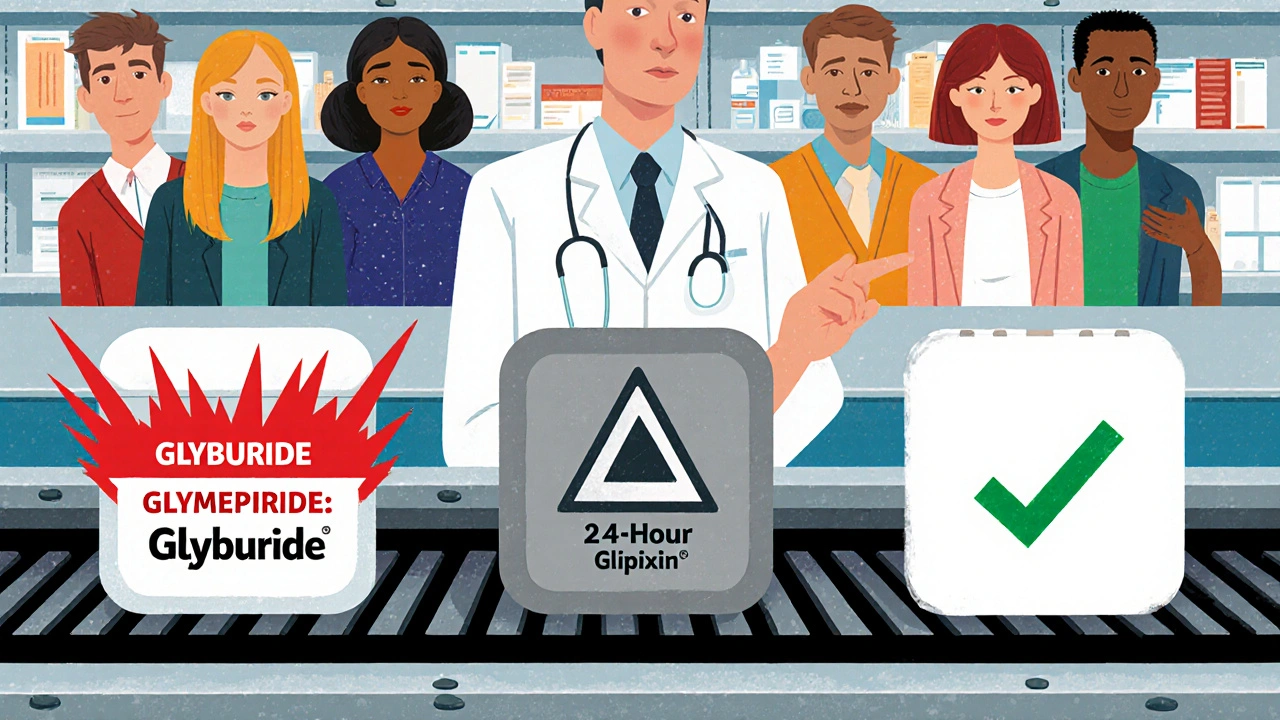
Glimepiride and Gliclazide: Middle Ground
Glimepiride is in between. It’s longer-acting than glipizide but shorter and more predictable than glyburide. It causes about 7.8 hypoglycemia episodes per 1,000 patient-years - better than glyburide, worse than glipizide. It’s sometimes used if glipizide isn’t enough, but it’s not the first choice for older adults or those with irregular eating habits.Gliclazide (not available in the U.S.) is considered the most pancreas-specific, meaning it triggers insulin more naturally, like your body would. Studies show it has low hypoglycemia risk, similar to glipizide. It’s widely used in Europe and Australia, and the upcoming SURE-DM3 trial (2023-2026) is comparing it directly to glipizide in elderly patients.
Who Should Avoid Glyburide Completely?
The American Geriatrics Society’s 2023 Beers Criteria - a trusted guide for prescribing in older adults - says: avoid glyburide in anyone 65 or older. The risk of severe hypoglycemia is too high, especially if kidney function is declining (which happens naturally with age). The European Medicines Agency even restricts glyburide use in people over 75.Yet, a 2024 audit of 500,000 Medicare patients found nearly 29% of those over 80 were still being prescribed glyburide. That’s not just outdated - it’s dangerous.
If you’re over 65, have kidney issues, eat at irregular times, or live alone, glipizide is the only sulfonylurea that makes sense. Even then, start low - 2.5 mg once daily - and go slow. Don’t rush the dose up.
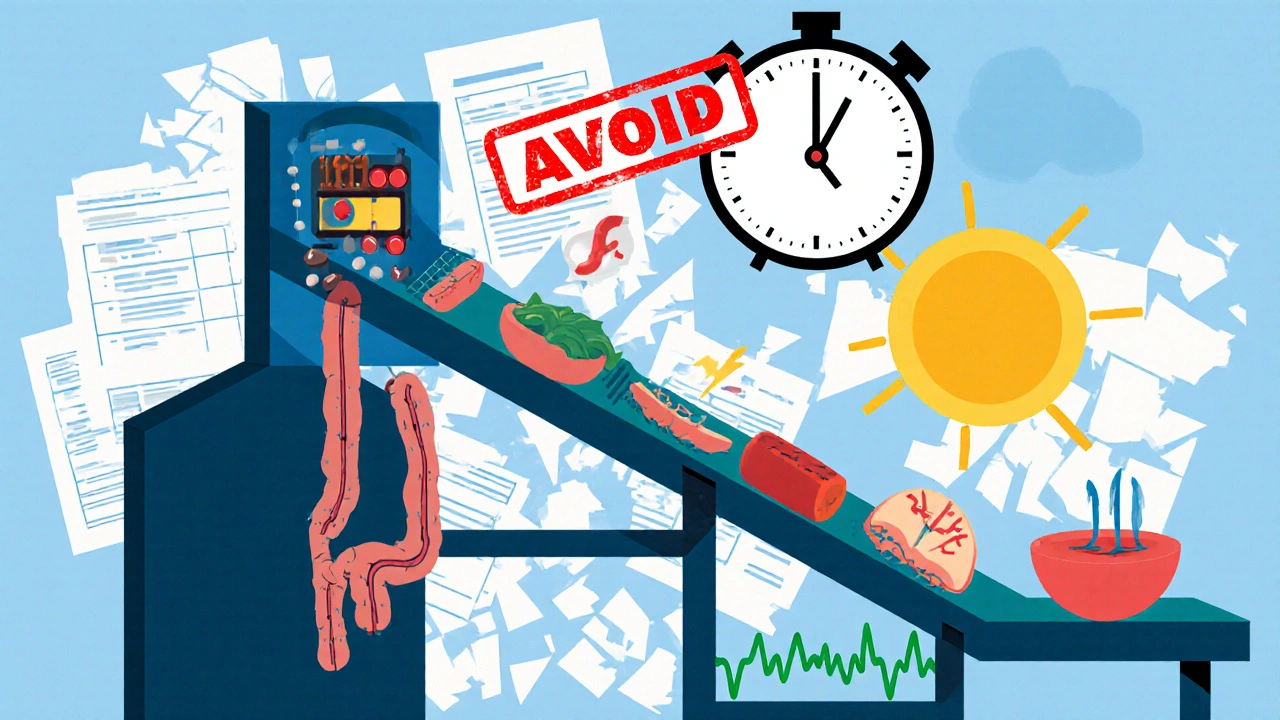
What About Newer Drugs?
Yes, newer medications like SGLT2 inhibitors (e.g., empagliflozin) and GLP-1 agonists (e.g., semaglutide) are safer. They don’t cause hypoglycemia on their own, and some even help with weight loss and heart protection. But they’re expensive. And not everyone can access them.For many, sulfonylureas are still the only affordable option. The American Diabetes Association’s 2024 guidelines say: if you’re going to use a sulfonylurea, pick glipizide. It’s the best balance of effectiveness and safety.
How to Stay Safe on Any Sulfonylurea
Even with glipizide, hypoglycemia can happen. Here’s how to protect yourself:- Start low, go slow. Begin with 2.5 mg of glipizide. Wait 2-3 weeks before increasing. Don’t rush.
- Know your symptoms. Sweating, shaking, hunger, dizziness, confusion - these are early signs. Don’t ignore them.
- Use the 15-15 rule. If you feel low, eat 15 grams of fast-acting sugar (glucose tabs, juice, candy). Wait 15 minutes. Check your blood sugar. Repeat if needed.
- Carry glucose. Keep glucose tabs or gel in your bag, car, and bedside drawer.
- Talk to your doctor about kidney function. If your eGFR drops below 60, glyburide should be stopped. Glipizide is safer until eGFR falls below 30.
- Adjust doses in the hospital. If you’re admitted, your sulfonylurea dose should be cut by at least half. Many hospitals now have protocols for this.
The Bottom Line
Sulfonylureas aren’t going away. But the era of treating them as interchangeable is over. Glyburide is a high-risk drug, especially for older adults. Glipizide is the safer choice when you need a sulfonylurea. And glimepiride? Only if glipizide isn’t enough - and even then, monitor closely.The goal isn’t just to lower your A1C. It’s to lower it without putting you at risk of a life-threatening low. If your doctor still prescribes glyburide, ask why. If you’re on it now, talk to them about switching. Your future self will thank you.


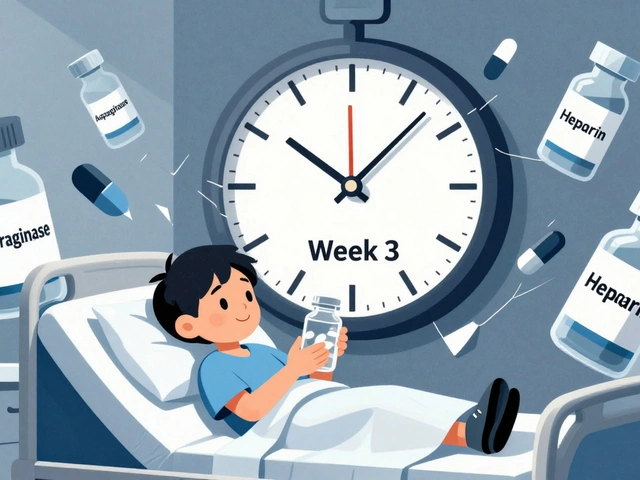
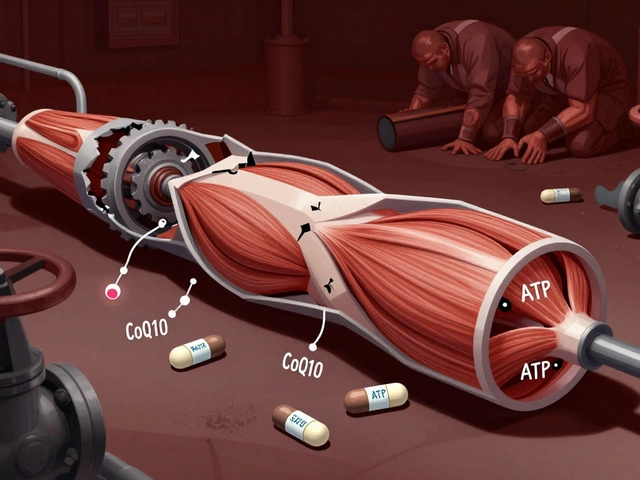




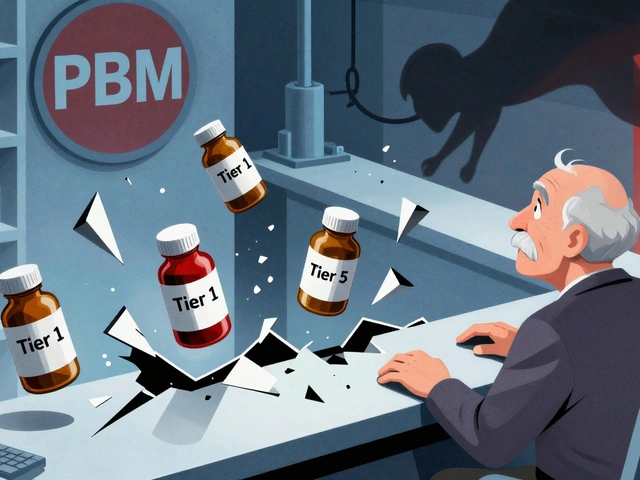
20 Comments